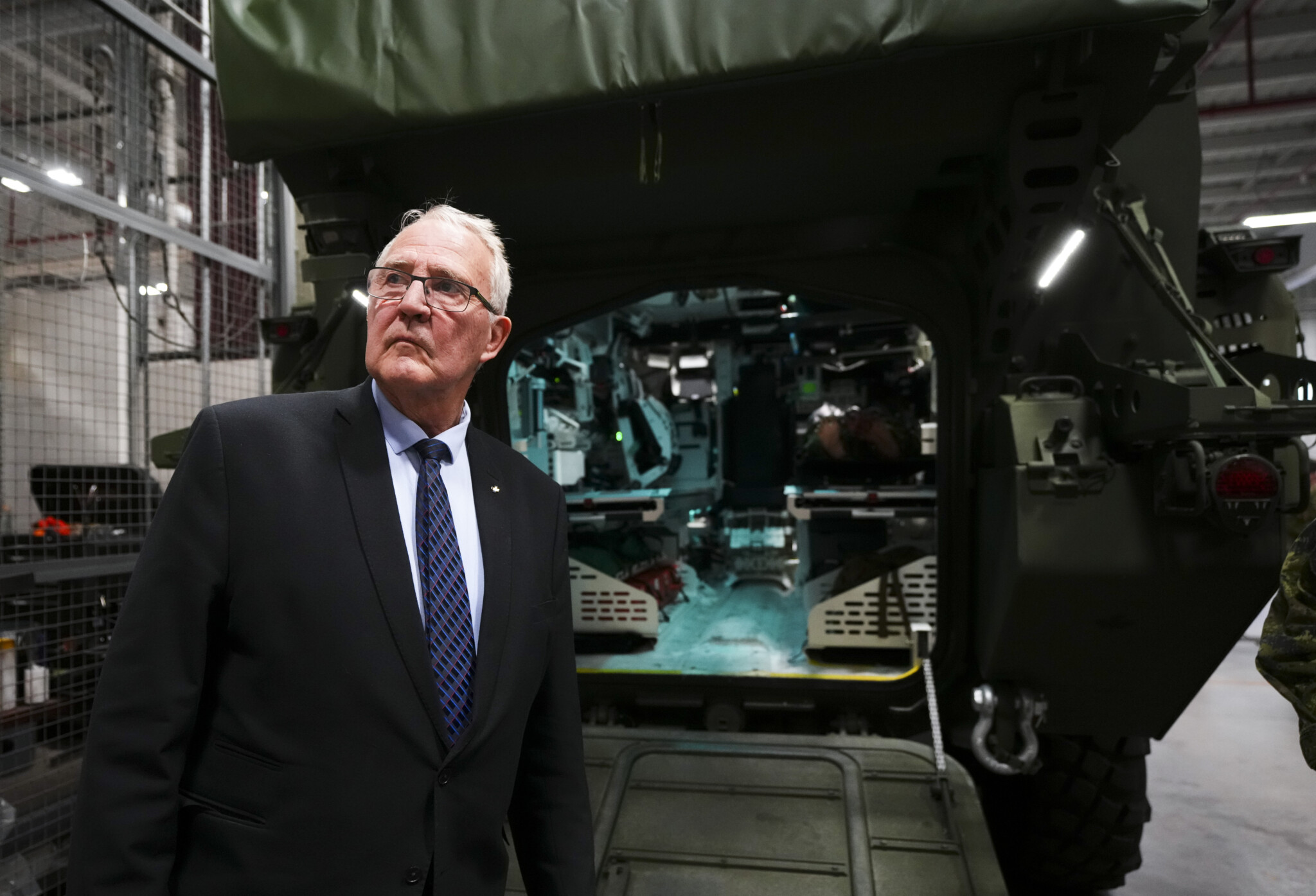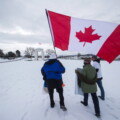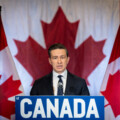While Justin Trudeau faced sharp scrutiny from world leaders and domestic analysts towards past and planned defence spending at the recent NATO summit, The Hub found that Canada’s spending on military equipment and national defence is far below previous projections, resulting in arguably the worst recent spending record of NATO members.
We’ve looked at Canada’s spending on national defence as a share of GDP between 2016 and 2023, as well as spending on major equipment as a share of defence spending, the two components of NATO member spending pledges. We have examined what was actually spent during those years, as well as what was planned for spending in the Department of National Defence’s 2017 defence policy, “Strong, Secure, Engaged.”
Equipment, as defined by NATO, includes items that are essential for military operations, such as weapons, deployable technology, vehicles from trucks to warships, and research and development. The equipment spending benchmark for NATO members is 20 percent of their total defence expenditure. Defence expenditure, meanwhile, is defined as payments made by a national government specifically to meet the needs of its armed forces, those of allies, or of NATO. Overall, the alliance requests members devote two percent of their GDP towards defence.
In the seven years between 2016 and 2023, Canada undershot its own projections for military equipment spending. It only came as close as 5.26 percentage points to NATO’s 20 percent guideline in 2020, and as close as 2.06 percent to the country’s own projection that same year. Last year, the Department of National Defence was over eight percentage points short of the 23 percent of defence expenditure it promised for new equipment, having spent only 14.4 percent of its defence expenditure on equipment. 2022 saw the greatest gap between real equipment spending and projections, with 12.3 percentage points between the planned 23.7 percent and the actual 11.33 percent spent.
A decline in Canada’s equipment spending as a portion of defence spending was seen in 2020 during the COVID-19 pandemic. Had the share of Canada’s equipment spending continued to grow at its average rate from 2016 and 2019—an 8.7 percent growth in the share of defence spending year-over-year—by 2023 it would have been just shy one point from the 20 percent target.
As remarked this April in The Hub’s DeepDive on military spending, Canada’s military equipment readiness is in a very poor state. Over half (55 percent) of Canada’s air force’s fighter jets, maritime aviation, search and rescue, tactical aviation, and transport aircraft were recently deemed “not serviceable,” i.e. in no state to deploy. The same goes for 54 percent of navy frigates, submarines, arctic and offshore patrol ships, and maritime coastal defence vessels, and for 46 percent of the army’s armoured fighting vehicles, artillery, combat support vehicles, logistics equipment, combat support vehicles, and logistics equipment.
This analysis of equipment underspending is consistent with another report published by the Parliamentary Budget Officer on July 8. It reported that the Department of National Defence will undershoot the eventual defence spending commitment of its more recent defence policy, “Our North: Strong and Free,” by $5.6 billion in fiscal year 2029-30. Canada will not spend $57.8 billion or 1.76 percent of GDP on defence that year, the PBO reported, but instead $52.2 billion or 1.42 percent of GDP. The PBO considers historic gaps between projected and real defence spending, such as the gap in equipment spending illustrated above.
On July 11, Prime Minister Justin Trudeau committed Canada to devote two percent of GDP towards defence by 2032, during the alliance’s annual summit in Washington and following criticism from fellow members, especially the United States. However, costed details on how Canada will achieve this goal remain elusive.
Commentators, such as Philippe Lagassé, a Norman Paterson School of International Affairs professor, have said that meeting the two percent of GDP in defence spending target will require implementing ten capabilities sought from the “Our North: Strong and Free” defence policy. These include, among others, expanding Canada’s submarine fleet, integrated air and missile defence, long-range air and sea-launched missile capacity, and surveillance and strike drone capabilities.
“I suspect that the overall recapitalization of the CAF will push Canada above two percent of GDP on defence in the coming decades. While the timelines are optimistic, the recapitalization has been happening, so there’s hope here,” wrote Lagassé on X. However, “there are too many variables at play to say if it’ll happen by 2032,” he said. However, the inability to meet spending targets in the previous defence policy raises questions about when and how recent spending commitments will be realised.
As of 2023, NATO estimates that Canada has the fourth lowest defence spending as a share of GDP, only ahead of Spain, Belgium, and Luxembourg, and the second lowest equipment spending as a share of defence spending, only ahead of Denmark. Canada is the only NATO member to meet neither the defence spending nor equipment spending target in 2023.









